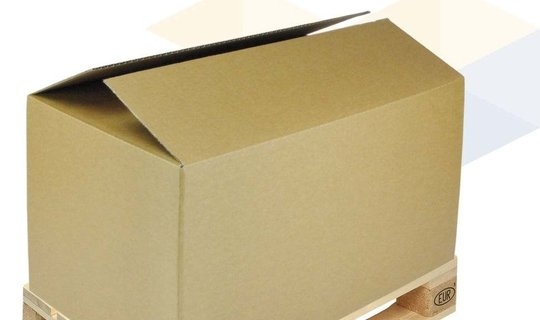
Boxes, currogated cardboard and paper
Corrugated cardboard as material is simplicity itself: several layers of paper with one, two or three corrugated layers glued together. The result is a contemporary, versatile, strong and yet flexible packaging.
Cardboard boxes offer the ideal protection for many products. They are also environmentally friendly and can be reprocessed into paper and cardboard several times.
Production process corrugated cardboard
Golkarton is made on the corrugated cardboard machine. The machine heats the paper webs to 100 to 110 ° C and humidifies them with steam. Riffel rolls form the golf course, glue is applied to the wave crests and then a press roller applies the cover. A printed paper layer can also be applied directly to the wave. The formed cardboard is then optionally provided with folding seams, cut to size, stacked up and transported to the intermediate store. A modern corrugated cardboard machine has a length of 120 meters and a width of ± 2.85 meters. They are equipped with the most modern control techniques. The rolls of paper used weigh between 2,000 and 3,000 kg.
Qualities corrugated cardboard boxes
The individual layers of paper, called liners, usually consist of strong paper types. The wave is necessary to keep the liners apart. This construction provides the unique character of corrugated cardboard.
Single-sided corrugated cardboard box consists of a corrugated paper web adhered to a smooth coating.
Double-sided corrugated cardboard box consists of a corrugated paper web with a coating on both sides.
The paper for the golf usually consists of one of the following materials:
- Wellenstof
- Schrenz (gray)
- Half-cell fabric
The paper for inside or outside sheet usually consists of:
- Kraftliner (from new wood fibers)
- Testliner (from recycled paper)
Corrugated cardboard is very stiff at right angles to the direction of the wave, but easily nods in the other direction. The strength of the corrugated cardboard box depends on the quality of the paper used in the manufacture. Corrugated cardboard with a paper quality of 120 g / m² is considerably less robust than corrugated board with a quality of 180 g / m². The strength of the packaging depends on the type of paper and the number of layers that make up the material.
Each cardboard box supplier applies its own quality requirements and has its own designations for the cardboard qualities.
The following most common thickness codes can be distinguished in corrugated cardboard:
- A, the coarse wave, with a wave height of ± 4½ mm and about 120 waves per meter.
- B, the fine wave, with a wave height of ± 2½ mm and about 160 waves per meter.
- C, the medium-coarse wave, with a wave height of ± 3½ mm and about 140 waves per meter.
- D, the goliath wave, with a wave height of ± 9 mm and about 70 waves per meter.
- E, with a wave height of ± 1.2 mm high and approximately 300 waves per meter
- F, the microwave, with a wave height of ± 0.8 mm high and about 600 waves per meter.
- G and N, with a wave height of ± 0.5 mm and about 550 waves per meter.
FEFCO The European Federation of Corrugated Board Manufacturers (FEFCO) has developed a comprehensive code system with the aim of replacing cumbersome definitions of corrugated boxes and packaging constructions with simple international symbols. These symbols are language-independent and generally understandable. The code can also be used for orders and specifications of packaging for shipment.
Box size
Dimensions of cardboard boxes are always indicated in millimeters (mm). For this, the inside size is calculated. The order of measurement is always length x width x height. Here the length x width form the ground plane (or the opening at the top). The length is always the longest side of the ground plane.
To determine the correct box size, measure the outside dimensions of your product. Add 3 - 5 mm extra to the external dimensions of your product (both in length, width and height). For a small box 3 mm, for large sizes 5 mm. This way you get the perfect box size for your product. If your product is first packaged in packaging material, you must take this into account when determining the final box sizes.
